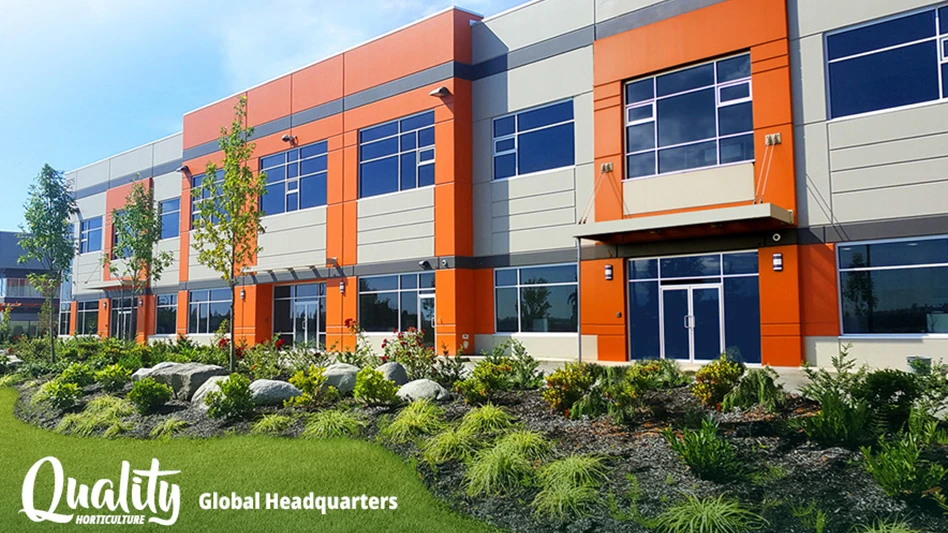
Saving a cent or two on each flat or pot of plants you grow can add up to many dollars over the growing season. In shipping, it’s the details in each step that make the cents.

Timing is important in all stages of production; this extends over into shipping. Getting the plants to the customer when they are needed will result in repeat orders. Several areas are worth looking at when you want to improve your shipping operation.
Facilities layout
Locate the shipping area central to the growing area to reduce the distance plants must be moved. In small operations, a headhouse can serve both planting and shipping purposes. In multi-acre greenhouses, more than one shipping point may be desirable. Separating the shipping area from the potting/transplanting area can also reduce plant-moving congestion.
Provide adequate space in the shipping area to assemble orders and move around. Clear span buildings with a ceiling height of at least 12 feet are required for forklift operation. The floor of the shipping area and the greenhouse aisles should be paved for easy movement of equipment.
Good drainage in the shipping area is necessary if plants will be watered there before loading. The floor surface should be coated with a non-slip coating to prevent falls.
Provide at least 30 foot-candles of light where plant selection and handling takes place. Fluorescent or metal halide gives the best light spectrum. Avoid light placement that causes glare.
Handling in the greenhouse
There are two basic methods of assembling the plants needed to fill an order: 1) individually by going from growing area to growing area picking the number of flats or pots of each variety, or 2) collectively by gathering the total day’s needs of each variety, moving them to the order assembly area and then selectively picking the right number to fill individual orders.
For orders with a large number of a few varieties, the first method generally works best. If there are only a few containers of many varieties, the second method will usually save considerable time.
The task of locating the right plants can be time consuming. Some growers are using wireless handheld scanning computers to aid in tracking product location. These can also provide inventory control and billing. UPC labels are attached to each flat or pot as it is seeded or transplanted and then are tracked whenever they are moved. When shipped the flats are removed from inventory.
Reducing walking time by handling more flats at a time with either carts or conveyors can produce significant savings, and the payback is short.
One of the best systems for larger growers with a local delivery area uses carts that are directly loaded in the greenhouse, pushed or pulled to the shipping area where they are shrink-wrapped and then loaded onto the delivery truck. A dock or hydraulic tailgate is needed in the loading area.
A mono-rail conveyor is convenient where plants are grown in individual houses connected by a headhouse. Through the use of switches, plant carriers can be pushed from any greenhouse to the shipping area.

Packing area efficiency
If the orders are not assembled in the growing area, then assembly is done in the packing area. An efficient routine needs to be developed to save time and handling. Some growers have adapted gravity flow racks to make order picking easier. These consist of racks of sloping conveyors adjacent to a work aisle. Flats or pots in carriers are delivered by cart to the back of the racks, loaded onto the conveyor and are moved by gravity to the front edge. Workers select flats from the conveyors to fill the orders.
To save time during the shipping period, label or tag plants at the time they are planted. Also, water plants before they are brought to the shipping area. This can be done by passing them through a water tunnel or by moving a whole cart through a water station.
For growers that box their plants for shipment by common carrier or package delivery service, a workstation area is needed to do the packaging. An efficient workstation design can increase efficiency by 20 to 30 percent. The workstation should include a work table, space for supplies, space for the packaged boxes and be convenient to the plant storage area. Workers should do a minimum of walking. Work tables should be at elbow height. Locate a conveyor at the back of the work table to carry the filled boxes to the shipping area.
Loading docks
Loading docks are becoming more important to greenhouse and nursery operations for both receiving material and shipping plants. They provide a platform that is level with the truck bed, making it accessible to forklifts, fork trucks, carts and hand trucks. Lifting and carrying can be reduced.
Location, construction and safety are important. Primary concerns should be for a location with convenient access to the headhouse or nursery and the highway, and adequate space for storage of materials and maneuvering equipment.

Explore the February 2016 Issue
Check out more from this issue and find your next story to read.
Latest from Greenhouse Management
- North Carolina Nursery & Landscape Association announces new executive vice president
- Plant Development Services, Inc. unveils plant varieties debuting in 2025
- Promo kit available to celebrate first National Wave Day on May 3
- Applications now open for American Floral Endowment graduate scholarships
- Endless Summer Hydrangeas celebrates 20 years with community plantings
- Invest in silver
- Garden Center magazine announces dates for 2025 Garden Center Conference & Expo
- USDA launches $2 billion in aid for floriculture growers





